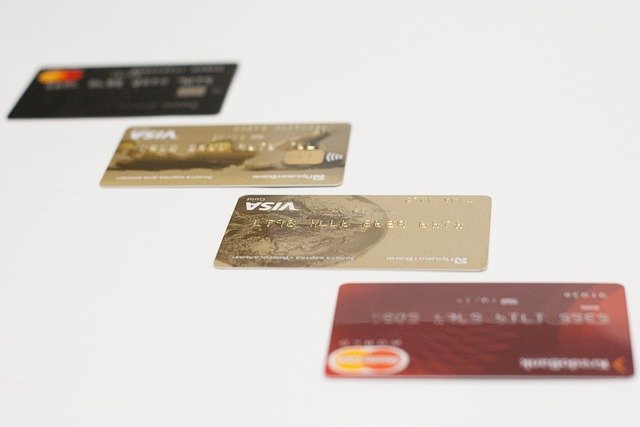5 Tips on How to Choose the Right Credit Card
Selecting the right credit card can be a daunting task, given the numerous options available in the market. Each card comes with its own set of features, benefits, and potential drawbacks. Understanding how to navigate these choices is crucial for making a decision that aligns with your financial needs and lifestyle. This article will explore five essential tips to help you choose the most suitable credit card for your circumstances.

Choosing the right credit card is a crucial financial decision that can affect your spending power, credit score, and overall financial health. With countless options available in today’s market, understanding what to look for ensures you select a card that truly serves your needs rather than working against them.
How to Assess Your Spending Habits and Financial Goals
Before diving into credit card options, take a honest look at your spending patterns and financial objectives. Track your monthly expenses across categories like groceries, gas, dining, and travel to identify where you spend most. If you frequently dine out, a card offering higher rewards on restaurant purchases makes sense. For heavy travelers, airline miles or hotel points might provide better value. Consider whether you plan to carry a balance or pay off your card monthly, as this dramatically affects which card features matter most. Those who pay in full should prioritize rewards and benefits, while balance-carriers need low interest rates above all else.
What are the Credit Card Benefits Beyond Rewards
While cashback and points grab attention, numerous other benefits can provide substantial value. Purchase protection covers damaged or stolen items bought with your card, while extended warranties double manufacturer coverage periods. Travel benefits include trip cancellation insurance, lost luggage reimbursement, and rental car coverage that can save hundreds on separate insurance policies. Many premium cards offer airport lounge access, concierge services, and exclusive event access. Cell phone protection, price matching guarantees, and fraud monitoring add layers of financial security that extend far beyond earning rewards on purchases.
How to Compare Credit Card Fees and Interest Rates
Understanding the true cost of credit card ownership requires examining multiple fee structures and rate types. Annual fees range from zero to several hundred dollars, so calculate whether rewards and benefits justify the cost. Look at the Annual Percentage Rate (APR) for purchases, balance transfers, and cash advances, as these can vary significantly. Balance transfer fees typically cost 3-5% of the transferred amount, while cash advance fees often include both a percentage and flat fee. Foreign transaction fees of 2-3% can add up quickly for international travelers. Late payment penalties and over-limit fees should also factor into your decision, especially if you occasionally miss payments.
| Card Type | Typical APR Range | Annual Fee Range | Best For |
|---|---|---|---|
| Rewards Cards | 16.99%-24.99% | $0-$695 | Regular spenders who pay in full |
| Low Interest Cards | 12.99%-18.99% | $0-$99 | Balance carriers |
| Secured Cards | 18.99%-26.99% | $0-$49 | Building/rebuilding credit |
| Premium Travel Cards | 17.99%-25.99% | $95-$695 | Frequent travelers |
| Student Cards | 17.99%-25.99% | $0 | College students |
Prices, rates, or cost estimates mentioned in this article are based on the latest available information but may change over time. Independent research is advised before making financial decisions.
What Credit Score is Needed for Different Types of Cards
Credit card approval largely depends on your credit score, with different card tiers requiring specific score ranges. Excellent credit (750+) opens doors to premium rewards cards with the best benefits and lowest rates. Good credit (670-749) qualifies for most standard rewards cards and competitive rates. Fair credit (580-669) limits options to basic cards with fewer rewards but can still access some decent options. Poor credit (below 580) typically requires secured cards where you deposit money as collateral. However, credit scores aren’t the only factor - income, debt-to-income ratio, and banking relationships also influence approval decisions. Some issuers are more lenient with specific score ranges, making it worth applying to multiple companies if you’re on the borderline.
How to Evaluate the Card Issuer’s Customer Service and Digital Tools
The quality of customer service and digital platforms can make or break your credit card experience. Research customer satisfaction ratings from J.D. Power and other consumer organizations to gauge overall service quality. Test the issuer’s mobile app and website before applying - look for features like real-time transaction alerts, spending categorization, credit score monitoring, and easy payment scheduling. Consider the availability of customer service representatives, including 24/7 phone support and live chat options. Some issuers offer superior fraud protection with instant notifications and easy dispute processes. Digital wallet compatibility, automatic bill pay options, and integration with budgeting apps can streamline your financial management and enhance your overall experience with the card.
Selecting the right credit card requires balancing multiple factors against your personal financial situation and goals. Take time to research options thoroughly, read terms and conditions carefully, and don’t rush into a decision based solely on sign-up bonuses or flashy marketing. The best credit card is one that complements your spending habits, offers valuable benefits you’ll actually use, and comes from a reputable issuer with excellent customer service.




